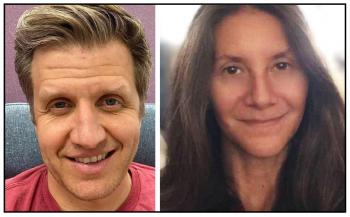Image Caption
Summary
Local Journalism Initiative Reporter
Windspeaker.com
Like countless others, officials with the Indigenous Sport Council of Alberta (ISCA) were forced to pivot when lockdowns started being imposed because of the COVID-19 pandemic in early 2020.
The work ISCA reps have managed to do since then is now being heralded as revolutionary.
ISCA had arranged for more than two dozen in-person community engagement meetings last year throughout the province. Those meetings were to determine what sort of needs, barriers and priorities there were for sport, physical activity and recreation for Indigenous people in Alberta.
From there, the original plan was to try to determine what type of programming the organization should be offering to specific Indigenous communities and people.
When the pandemic quashed plans to gather information from community engagement meetings, ISCA officials didn’t simply give up.
Instead, they put together a 49-question survey and invited those who took part in their individual and family fitness challenges in 2020 to fill it out.
The end goal remained the same, to figure out what programming ISCA should be offering.
More than 1,300 individuals ended up filling out the survey. Those results will be analyzed and presentations will eventually be made to governments, funders and potential sponsors in hopes of securing requested ‘specific’ funding to various Indigenous communities and peoples in the province.
Janice Forsyth, a leading Indigenous sports advocate in Canada, is blown away with the work ISCA has done this far and by the fact the organization managed to get so many people to fill out a time-consuming survey.
“In my 20 years of being involved at some of the highest decision-making levels of Canadian sport, in addition to my research in the field, I have never seen any organization, whether it be an Indigenous or allied organization, so keen to introduce new ways of understanding and engaging the populations they serve,” said Forsyth, who is the vice-president of the Aboriginal Sport Circle.
Forsyth, the director of the Indigenous Studies program at Western University in London, Ont., believes the work being done in Alberta can set many precedents.
“The significance of what ISCA is doing cannot be overstated,” said Forsyth, who is also an associate professor of Sociology at Western. “Its vision and scope for data collection in Canada is groundbreaking and, with proper stewardship, has the potential to catapult the Canadian Indigenous sport system forward in ways previously unimagined.”
Forsyth believes it only makes sense to have concrete data on the types of specific programming being sought in Indigenous communities before financial assistance is requested.
“At present, there is no official national survey that collects data on Indigenous involvement in sport or physical activity in Canada,” she said. “This means that organizations like ISCA are trying to build healthier youth and communities without reliable data to show governments and funders why Indigenous sport organizations should receive more and a wider range of funding.”
Jacob Hendy, ISCA’s executive director, said staff members from his organization have already spent numerous hours compiling survey information they have received.
“We took that and now we’ve analyzed it,” Hendy said of survey results. “We’ve put them into present-ready form that looks really nice with graphs and pie charts for each question, for each community.”
Hendy said ISCA will soon be hiring an outside company to further analyze its work. Various presentations will then be made to help ISCA secure funding to operate requested programming.
Hendy believes his organization is severely underfunded and work currently being undertaken could help in that regard.
“Government and corporate sponsors and industries love data,” Hendy said.
Hendy added talks have already been held with many who are willing to help out.
“About a dozen provincial sports organizations have already donated sports camps for Indigenous communities,” Hendy said. “But they don’t want to just parachute in and leave, like a one-time thing. They really want to create sustainability. And we’re working with them to mentor, to create coaches to get them certified and officials to be able to really grow these sports within the communities.”
Hendy said finalizing survey results and preparing for fund-seeking presentations will involve several more months of work.
“It’s a longer process,” he said. “We’re doing some strategic planning with our board as well.”
Hendy anticipates survey work will not be completed until later this year so Indigenous communities and people will not start to see any benefits likely until 2022.
Hendy would love to see other Indigenous sports groups across the country follow in ISCA’s footsteps and conduct similar surveys.
“If we can help other organizations in Canada to do that, it would be huge for them,” he said.
Local Journalism Initiative Reporters are supported by a financial contribution made by the Government of Canada.

